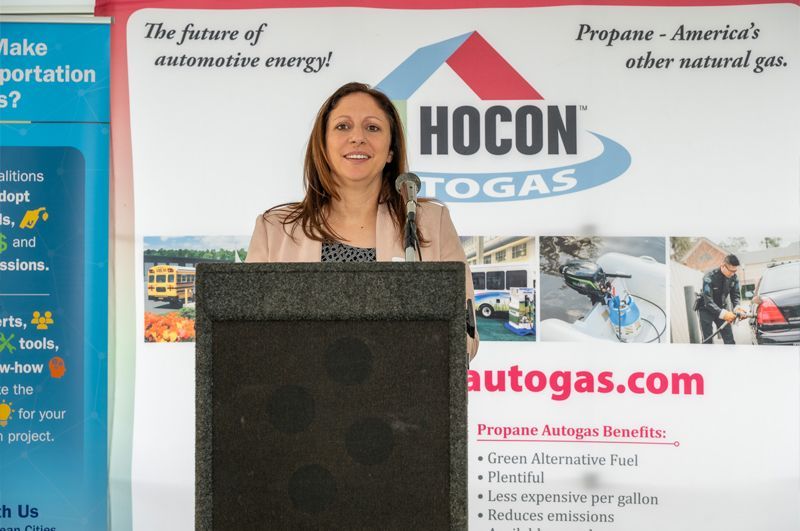Alternative Fuel News
Capitol Clean Cities of Connecticut, Inc.
The US Department of Energy's Clean Cities Program advances America's economic, environmental and energy security by supporting local actions aimed at reducing petroleum consumption and transportation. Read more about the next evolution in clean, American fuel!
PROPANE AUTOGAS A FOCUS DURING GREEN TRUCK SUMMIT AT 2016 NTEA WORK TRUCK SHOW
PERC officials to speak about propane autogas on multiple occasions during Green Truck Summit
WASHINGTON (February 24, 2016) — The Propane Education & Research Council will again participate in the Green Truck Summit sessions at the National Truck Equipment Association's Work Truck Show in Indianapolis.
The Green Truck Summit sessions include information on the latest in alternative fuels and advanced technology within the trucking and transportation industry.
Tucker Perkins, PERC's chief business development officer, is joining representatives from across alternative fuel industries to discuss “Work Truck Trends and Outlook for Alternative Fuel Technology” from 9:30 to 10:45 a.m., Tuesday, March 1.
Perkins will also lead a panel called “The Propane Autogas Advantage: Reduce Your Total Cost of Ownership” from 8 to 9:15 a.m. Wednesday, March 2. Perkins will be joined by two propane autogas users: Renee Dawson, director of transportation and school safety at DeKalb Central United Schools in Auburn, Indiana, and Glenn Chamberland, fleet manager for AAA Allied Group Inc. in West Hartford, Connecticut. Dawson and Chamberland will share their first-hand experiences with managing vehicle fleets powered by propane autogas and the subsequent savings they have enjoyed.
“From the time of purchase to the retirement of a vehicle, using propane autogas shows its advantages through less time spent on maintenance, reduced fuel costs, and more time spent on the road,” Perkins said. “In comparison to other fuels, propane has more flexible refueling options and requires no emissions-reduction equipment.”
In addition to the Green Truck Summit, PERC and Roush CleanTech will announce the adoption of propane-autogas-powered vehicles by two new major customers during a press conference at 10:30 a.m. Thursday, March 3. The conference will begin in Roush's booth, 5793.
Show attendees are invited to learn more about propane's lowest total cost-of-ownership at PERC's booth, 5591. Several propane-autogas-powered vehicles will be on display in the PERC booth, including:
- A Ford F-59 with ROUSH CleanTech fuel technology.
- A Ford F-150 with a Westport WiNG power system.
- A Ford F-250 with an ICOM alternative fuel system.
To learn more about propane autogas, visit propane.com/on-road-fleets.




